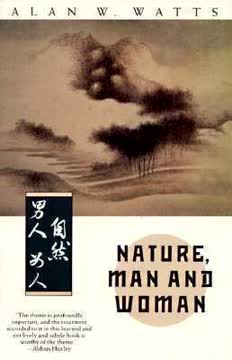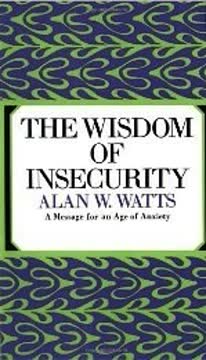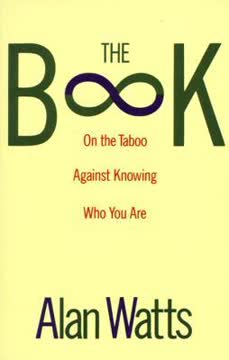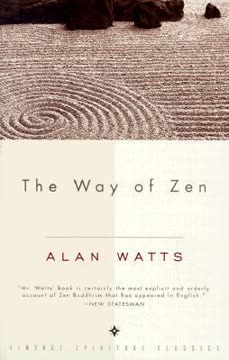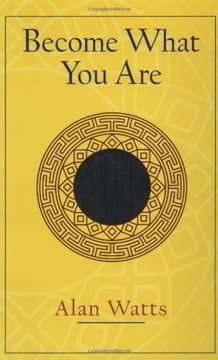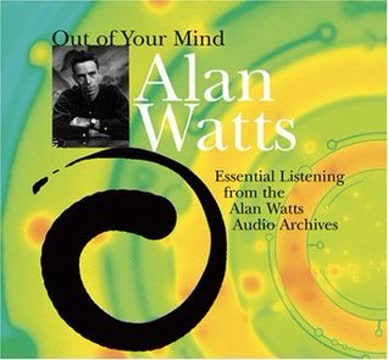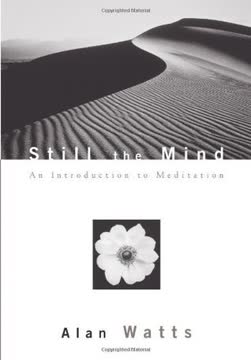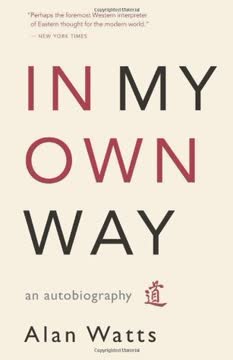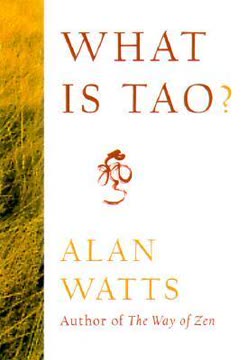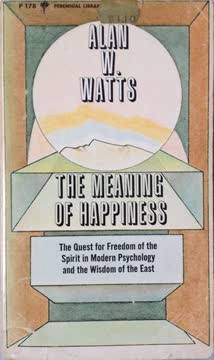Key Takeaways
1. Nature is not a separate "thing" but a seamless, interconnected process.
In such a world it is impossible to consider man apart from nature, as an exiled spirit which controls this world by having its roots in another.
Interdependence is key. The world isn't a collection of separate objects but a web of interconnected relationships. Man is not an isolated entity but an integral part of this seamless whole. This perspective challenges the common Western view of humans as separate from and superior to nature.
- Think of a forest: each tree, plant, and animal is interconnected, relying on each other for survival.
- Consider the human body: organs work together in a complex system, not as isolated parts.
- The universe itself is a vast network of interconnected galaxies and star systems.
Seamless unity. This interconnectedness means that actions in one part of the system have ripple effects throughout. Understanding this interconnectedness is crucial for living in harmony with nature and ourselves. It requires a shift from a fragmented view to a holistic one.
Beyond dualism. The idea of a separate "man" and "nature" is a construct of thought, not a reflection of reality. The true nature of the world is a dynamic, ever-changing process where all things are mutually dependent. This understanding dissolves the artificial boundaries we often create.
2. Western thought often creates artificial divisions between spirit and nature, mind and body.
The harsh divisions of spirit and nature, mind and body, subject and object, controller and controlled are seen more and more to be awkward conventions of language.
Dualistic thinking. Western culture tends to separate spirit from nature, mind from body, and subject from object. This creates a sense of alienation and conflict, where the spiritual is seen as superior to the physical, and the mind as separate from the body.
- This dualism is evident in the way we often view the body as a mere vessel for the soul.
- It's also reflected in the idea that the natural world is something to be conquered and controlled.
- This separation leads to a feeling of being "cut asunder" from ourselves and the world.
Consequences of division. These artificial divisions lead to a fragmented understanding of reality. We lose sight of the interconnectedness of all things and create a sense of inner conflict. This separation also fuels the desire to control and dominate nature, rather than living in harmony with it.
Beyond categories. The world is not made up of separate "stuffs" or entities, but of processes and relationships. Mind and matter, spirit and nature, are not distinct substances but different aspects of the same underlying reality. This understanding requires a shift from thinking in terms of categories to thinking in terms of patterns and processes.
3. True understanding comes from feeling and direct experience, not just intellectual analysis.
We need to know what we are talking about, which requires a primary background of contemplation and inward silence, of watching without questions and jumping to conclusions.
Beyond the intellect. Intellectual analysis alone cannot grasp the true nature of reality. True understanding requires a direct, felt experience of the world, a kind of "knowing" that goes beyond words and concepts. This is the essence of "kuan," or wordless contemplation.
- Think of learning to dance: you can read about it, but true understanding comes from feeling the movements.
- Consider appreciating art: intellectual analysis can enhance understanding, but the real experience is emotional and intuitive.
- The same is true for understanding nature: it requires a silent, receptive mind.
The limitations of thought. Thought, with its linear and analytical nature, can only grasp a limited aspect of reality. It breaks the world down into separate parts, missing the interconnectedness and wholeness of the whole. This is why intellectual understanding alone is insufficient.
The power of feeling. Feeling, in this context, is not just emotion but a way of knowing that is direct, immediate, and non-conceptual. It involves a silent, open awareness that allows us to perceive the world from the inside out. This is the path to true understanding.
4. The ego, with its grasping and controlling tendencies, is a major source of suffering.
Originally the ego includes everything, later it detaches from itself the external world.
The illusion of separation. The ego is the sense of a separate "I" that is distinct from the world. This sense of separation is an illusion, a construct of thought that creates a feeling of isolation and vulnerability.
- The ego is a "shrunken vestige" of a more extensive feeling of unity with the world.
- It is a sensation of mental strain, of trying to control and manage experience.
- This sense of separation is the root of much of our suffering.
The grasping mind. The ego is characterized by its grasping and controlling tendencies. It seeks to hold onto pleasure and avoid pain, creating a constant state of anxiety and dissatisfaction. This grasping is a form of resistance to the natural flow of life.
Letting go. True freedom comes from letting go of the ego's need to control and grasp. This involves recognizing that the ego is not the true self, but a limited and conditioned construct. By releasing the ego, we can experience a deeper sense of peace and connection.
5. Spontaneity, or "tzu-jan," is the natural way of being, free from forced effort.
The Chinese phrase which is ordinarily translated as “nature” is tzu-jan, literally “of itself so,” and thus a better equivalent might be “spontaneity.”
"Of itself so." The Chinese term "tzu-jan" captures the essence of spontaneity, meaning "of itself so." It implies that nature acts without external force or conscious intention. This is the natural way of being, free from forced effort.
- Think of a flower blooming: it unfolds naturally, without any conscious effort.
- Consider a river flowing: it follows its course spontaneously, without any external control.
- The same is true for human action: true creativity arises from spontaneity.
Beyond will power. Spontaneity is not the same as impulsiveness or lack of discipline. It is a state of being where action arises naturally from the present moment, without the interference of the ego's grasping will. It is a state of effortless action.
The art of "wu-wei." The Taoist concept of "wu-wei," often translated as "non-action," is not about passivity but about acting in accordance with the natural flow of things. It is about doing without forcing, allowing things to unfold spontaneously. This is the path to true creativity and effectiveness.
6. Sexuality, when integrated with spirituality, can be a path to profound understanding.
Above all, sexual love is the most intense and dramatic of the common ways in which a human being comes into union and conscious relationship with something outside himself.
Beyond the physical. Sexuality is not just a physical act but a powerful expression of our interconnectedness. It is a way of experiencing union with another, a glimpse of the seamless unity of all things.
- Sexual love is a "transportation" beyond the conscious will.
- It is a way of experiencing the organic spontaneity of our being.
- It is a path to profound understanding when integrated with spirituality.
The problem of separation. In cultures where there is a strong sense of separation from nature, sexuality is often viewed as problematic, degrading, or even evil. This is because it is seen as a reminder of our animal nature, rather than a path to spiritual insight.
Sacred sexuality. When sexuality is integrated with spirituality, it becomes a path to self-discovery and connection. It is a way of experiencing the divine in the human, of recognizing the sacredness of the body and its desires. This requires a shift from a dualistic view of sex to a holistic one.
7. The world's "meaninglessness" is a gateway to its deepest joy and freedom.
The idea of a purposeless world is horrifying because it is incomplete.
Beyond purpose. The world, in its totality, has no inherent purpose or goal. This can be a horrifying thought for those who seek meaning in external achievements or future outcomes. But it is also a gateway to profound joy and freedom.
- The world is not "human-hearted," meaning it does not have human purposes.
- This does not mean it is inhuman, but rather that it is beyond human categories.
- The absence of purpose allows for a deeper appreciation of the present moment.
The joy of "non-sense." When we let go of the need for meaning, we can experience the world as a kind of sublime nonsense, an expression of pure ecstasy. This is the joy of the present moment, free from the burden of past or future.
Freedom from grasping. The realization that the world has no inherent purpose frees us from the need to grasp or control it. We can simply be present, experiencing the world as it is, without the need to impose our own meaning upon it. This is the essence of true freedom.
8. Acceptance of the present moment, including suffering, is key to liberation.
The problem of death is surely not to be solved by the abolition of death, which is almost analogous to chopping off the head to cure headache.
Beyond resistance. Suffering is an inevitable part of life, and the attempt to avoid it only intensifies it. True liberation comes from accepting the present moment, including all its pain and discomfort.
- The problem of suffering is not to be solved by abolishing suffering, but by changing our relationship to it.
- This requires a willingness to feel our negative states without trying to escape them.
- It is in the acceptance of suffering that we find true strength and resilience.
The dance of opposites. Life is a dance of opposites, of joy and sorrow, pleasure and pain. These are not separate entities but two sides of the same coin. True understanding comes from embracing both, rather than trying to eliminate one.
The present moment. The present moment is the only reality we have. By accepting it fully, without resistance, we can experience a sense of peace and wholeness that transcends the limitations of our ego. This is the path to liberation.
9. The "inner identity" of opposites reveals the seamless unity of all things.
Things are separable in words which are inseparable in nature because words are counters and classifiers which can be arranged in any order.
Beyond duality. The world is not made up of separate and opposing forces, but of interconnected and interdependent relationships. Opposites like good and evil, life and death, are not mutually exclusive but rather two sides of the same coin.
- There is no north without south, no solid without space, no being without nothing.
- These opposites are not alternatives but correlatives, each defining the other.
- The "inner identity" of opposites reveals the seamless unity of all things.
The limitations of language. Language, with its tendency to classify and separate, often obscures the interconnectedness of reality. Words are counters that can be arranged in any order, but nature is a seamless whole.
The Möbius strip. The Möbius strip is a good analogy for the inner identity of opposites. It has two faces, yet they are identical. This illustrates the way in which seemingly separate things are actually one.
10. True wisdom lies in embracing both the form and the formless, the known and the unknown.
The point is that it is simply impossible to get away from it, however vividly we may imagine that we have done so.
Beyond fixed forms. The world is not made up of fixed and static forms, but of ever-changing processes. True wisdom lies in embracing both the form and the formless, the known and the unknown.
- The Tao is "formless," but it is not a blank void. It is a pattern without clearly discernible features.
- The world is both concrete and abstract, both material and spiritual.
- True understanding comes from embracing both aspects of reality.
The limits of knowledge. The more we know, the more we realize the limits of our knowledge. True wisdom lies in accepting the unknown, in recognizing that there are aspects of reality that will always remain beyond our grasp.
The dance of life. Life is a dance between the known and the unknown, the form and the formless. It is a process of constant change and transformation. True wisdom lies in embracing this dance, in allowing ourselves to be carried by the flow of life.
Last updated:
FAQ
What is "Nature, Man and Woman" by Alan W. Watts about?
- Explores Spirit-Nature Duality: The book examines the historical and cultural division between spirit and nature, particularly in Western thought, and how this duality shapes our relationship with the world and ourselves.
- Integrates Eastern Philosophy: Watts draws on Taoist, Buddhist, and Hindu philosophies to present an alternative, non-dualistic view of nature and human experience.
- Connects Sexuality and Spirituality: The book delves into the symbolic and real connections between man’s relationship to nature and to woman, especially through the lens of sexuality and love.
- Critiques Western Attitudes: It critiques the Western tendency to compartmentalize, control, and alienate both nature and sexuality, advocating for a more integrated, contemplative approach to life.
Why should I read "Nature, Man and Woman" by Alan W. Watts?
- Challenges Conventional Thinking: The book questions deeply ingrained Western assumptions about the separation of mind and body, spirit and nature, and offers fresh perspectives.
- Bridges East and West: Watts provides accessible insights into Eastern philosophies, making them relevant to modern Western readers seeking meaning beyond materialism.
- Addresses Sexuality and Love: It offers a thoughtful, non-moralistic exploration of sexuality, love, and gender roles, topics often treated superficially or dogmatically.
- Encourages Self-Understanding: Readers are invited to reconsider their own experiences, feelings, and relationships in light of a more holistic, interconnected worldview.
What are the key takeaways from "Nature, Man and Woman" by Alan W. Watts?
- Spirit and Nature Are Not Opposites: The perceived conflict between spirit and nature is a cultural construct, not an inherent reality.
- Integration Over Duality: True wisdom and fulfillment come from integrating, rather than separating, the spiritual and the natural aspects of life.
- Sexuality as Spiritual Experience: Sexual love, when approached contemplatively, can be a profound means of self-transcendence and connection with the world.
- Contemplative Awareness: Cultivating a receptive, non-grasping awareness (kuan) is essential for experiencing the fullness of life and overcoming alienation.
How does Alan W. Watts define the spirit-nature duality in "Nature, Man and Woman"?
- Historical Roots: Watts traces the duality to Western religious and philosophical traditions that separate the spiritual (male, mind, order) from the natural (female, body, chaos).
- Language and Thought: He argues that language and analytic thought reinforce this split by categorizing and abstracting reality.
- Contrast with Eastern Views: In contrast, Eastern philosophies like Taoism see spirit and nature as inseparable aspects of a single process.
- Consequences of Duality: This split leads to alienation from both the body and the environment, resulting in psychological and social problems.
What is the role of Eastern philosophy in "Nature, Man and Woman" by Alan W. Watts?
- Taoism and Non-Duality: Watts uses Taoist concepts such as tzu-jan (spontaneity) and wu-wei (non-striving) to illustrate a worldview where nature and spirit are unified.
- Zen and Contemplation: Zen Buddhism’s emphasis on direct, wordless experience (kuan) is presented as a remedy for the Western obsession with analysis and control.
- Critique of Western Science: Eastern thought is shown to offer a more holistic, relational understanding of the world, as opposed to the Western focus on objects and laws.
- Practical Application: These philosophies inform Watts’s advice on how to approach sexuality, love, and daily life with openness and acceptance.
How does "Nature, Man and Woman" by Alan W. Watts connect sexuality and spirituality?
- Symbolic Parallels: The book explores how the relationship between man and woman mirrors the relationship between humanity and nature.
- Sexuality as Union: Watts argues that sexual love, when free from grasping and abstraction, can be a direct experience of unity and transcendence.
- Critique of Repression: He critiques both puritanical repression and hedonistic indulgence, suggesting both are symptoms of the same dualistic mindset.
- Sacred Sexuality: Drawing from Tantra and Taoism, Watts presents sexuality as potentially sacred, not in opposition to spiritual life but as its expression.
What is the concept of "kuan" (contemplative awareness) in "Nature, Man and Woman" by Alan W. Watts?
- Wordless Contemplation: Kuan refers to a mode of awareness that is open, receptive, and non-judgmental, allowing one to experience reality directly.
- Beyond Analysis: It contrasts with the Western habit of dissecting and categorizing, which distances us from the fullness of experience.
- Foundation for Integration: Kuan is essential for overcoming the spirit-nature split, as it enables a sense of unity with the world and others.
- Practical Implications: This attitude is key in art, science, and especially in love and sexuality, where it allows for genuine connection and spontaneity.
How does Alan W. Watts critique Western attitudes toward nature and science in "Nature, Man and Woman"?
- Nature as Object: Watts criticizes the Western tendency to see nature as an object to be controlled, measured, and exploited.
- Limits of Analysis: He points out that scientific analysis, while powerful, fragments reality and can lead to a sense of alienation and complexity.
- Relational Reality: The book advocates for understanding nature as a web of relationships, not as a collection of separate things.
- Need for Intuition: Watts suggests that intuition and holistic awareness are necessary complements to scientific reasoning for a balanced life.
What does "Nature, Man and Woman" by Alan W. Watts say about the relationship between man and woman?
- Symbolic and Real Union: The relationship is both a symbol and a reality of the union between humanity and nature.
- Critique of Gender Roles: Watts challenges rigid, culturally imposed gender roles and the association of masculinity with spirit and femininity with nature.
- Mutual Fulfillment: True sexual and emotional fulfillment arises from mutual openness, acceptance, and the transcendence of roles.
- Sacred and Profane Love: The book distinguishes between love based on social convention (profane) and love that is spontaneous, authentic, and sacred.
What practical advice or methods does Alan W. Watts offer in "Nature, Man and Woman" for integrating spirit and nature?
- Cultivate Contemplative Awareness: Practice kuan—open, non-grasping attention to experience, especially in relationships and sexuality.
- Embrace Spontaneity: Allow feelings and actions to arise naturally, without excessive control or self-consciousness.
- Transcend Dualities: Recognize and let go of the artificial divisions between mind and body, spirit and nature, self and other.
- Celebrate Relationship: Approach love and sexuality as opportunities for genuine connection and self-transcendence, not as means to an end.
What are the best quotes from "Nature, Man and Woman" by Alan W. Watts and what do they mean?
- "The world is a whole greater than the sum of its parts because the parts are not merely summed—thrown together—but related."
- Emphasizes the importance of relationships and patterns over isolated entities, a core theme of the book.
- "Enjoyment is always gratuitous and can come no other way than of itself, spontaneously."
- Highlights the value of spontaneity and the futility of trying to force pleasure or fulfillment.
- "To know nature, the Tao, and the 'substance' of things, we must know it as, in the archaic sense, a man 'knows' a woman—in the warm vagueness of immediate contact."
- Suggests that true understanding comes from direct, intimate experience rather than abstract analysis.
- "The experience of sexual love is therefore no longer to be sought as the repetition of a familiar ecstasy, prejudiced by the expectation of what we already know."
- Encourages openness and presence in love, rather than chasing past experiences or ideals.
How does "Nature, Man and Woman" by Alan W. Watts remain relevant to modern readers?
- Addresses Ongoing Alienation: The issues of alienation from nature, the body, and authentic relationships are still prevalent in modern society.
- Guides Toward Integration: Watts’s call for integrating spirituality, sexuality, and daily life resonates with contemporary movements toward mindfulness and holistic living.
- Challenges Cultural Norms: The book’s critique of rigid gender roles, materialism, and the pursuit of control is increasingly relevant in discussions about identity and well-being.
- Offers Practical Wisdom: Its emphasis on contemplative awareness, spontaneity, and genuine connection provides timeless guidance for personal growth and fulfillment.
Review Summary
Nature, Man and Woman by Alan Watts explores Eastern philosophies and their relevance to Western thought, focusing on humanity's relationship with nature and sexuality. Readers appreciate Watts' accessible writing style and thought-provoking ideas, though some find parts challenging to grasp. The book challenges conventional Western views on spirituality, nature, and gender roles, drawing from Taoism and Buddhism. While some readers find certain sections dated or controversial, many praise the book for its profound insights and potential to expand one's perspective on life, relationships, and the human experience.
Similar Books
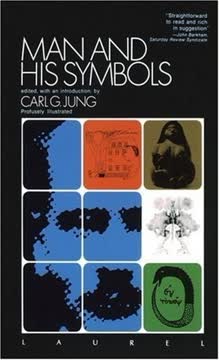

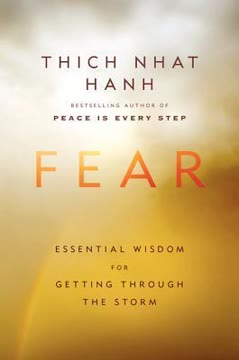
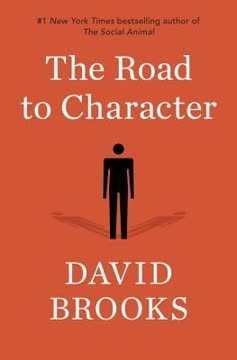

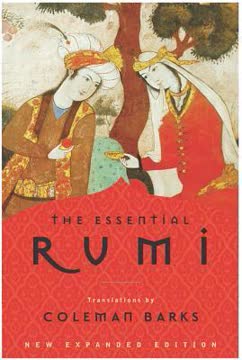
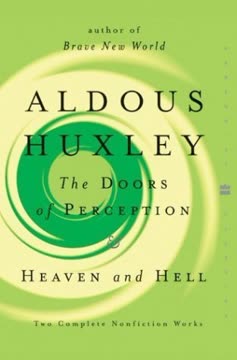
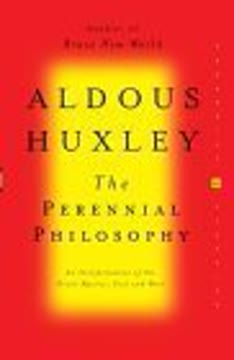

Download PDF
Download EPUB
.epub digital book format is ideal for reading ebooks on phones, tablets, and e-readers.
